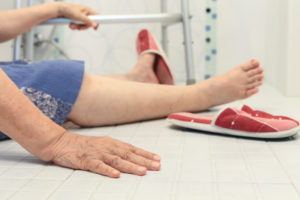Battling Drug Resistance in Long-Term Care Facilities
Know which bugs to watch out for and how to thwart their spread.
A recent report from the New York Times discussed the arrival of a highly contagious and potentially deadly fungus that is resistant to current medications. This scary report highlights the growing threat of drug-resistant pathogens and how senior care facilities are both the frontline and a breeding ground for the deadly diseases that superbugs can cause.
Drug-Resistant Superbugs

Dr. Debra Goff, an infectious disease specialist and founding member of the antimicrobial stewardship program at The Ohio State University Wexner Medical Center
So-called superbugs are infectious agents — bacteria, viruses and fungi — that are no longer responsive to previously effective medications. This happens because these infectious agents “mutate over time,” says Dr. Debra Goff, an infectious disease specialist and founding member of the antimicrobial stewardship program at The Ohio State University Wexner Medical Center.
Those mutations change the genetic code of the organism and may block the previously available pathway that a drug exploited to kill the infection.
Bacteria, in particular, are exceptionally agile in mutating to become resistant to medications. “After multiple exposures to the antibacterial drug they develop resistance to the drug,” Goff says, and this can great a major problem for all sorts of health care institutions — skilled nursing facilities, in particular.
That’s because people carrying the pathogen may come into contact with other people who are less healthy or have compromised immune systems that are unable to battle the infection on their own. Once the infection has taken up residence in a person’s body, it can be very difficult to fully eliminate.
In an institutional setting, frequent contact among residents or between health care workers and their charges may mean that these infections spread far and wide quickly. This eases the spread of such pathogens and can threaten the health — possibly even the lives—of residents in your long-term care facility.
The Biggest Threats
Currently, Goff says the most concerning drug-resistant pathogens lurking in long-term care and other health care institutions today are E. coli, C. auris, and C. difficile.
E. coli
Escherichia coli is a bacterium that’s found in the intestines of healthy people and animals. Most strains of this bacteria are harmless or cause a limited course of diarrhea, the Mayo Clinic reports, but there are a few “particularly nasty strains, such as E. coli O157:H7,” that can cause severe abdominal cramping, diarrhea, and vomiting.
E. coli infection is usually transmitted via food and water — raw vegetables and undercooked ground beef are common sources. In healthy adults, such infection is typically of little concern, but among older adults and those with chronic medical conditions or suppressed immune systems, infection can become very serious and cause potentially deadly kidney failure.
This threat is amplified when dealing with a drug-resistant form of E. coli, Goff says. “Multidrug-resistant E. coli is very problematic because it is the most common cause of urinary tract infections in long-term care. We are running out of effective oral antibiotics to treat these infections.”
C. auris
Candida auris is a fungus that causes serious illness. It tends to infect people who’ve been hospitalized or those who live in a skilled nursing facility. Its symptoms can be subtle or appear related to the medical condition for which the person has been hospitalized rather than a separate infection. Ear, wound, and bloodstream infections may be signs of C. auris, and a blood test can confirm its presence.
The fungus has a tendency to adhere to medical devices and tubes, so if your facility houses residents with feeding tubes, breathing tubes, or catheters, they may be particularly vulnerable to infection.
While most C. auris infections respond to antifungal medications, some strains have become drug-resistant, making them much more difficult to treat. “C. auris is starting to emerge in several areas around the U.S. and it is extremely resistant to several anti-fungal drugs,” Goff says. The Centers for Disease Control and Prevention reports that this emerging fungus “presents a serious global health threat” for three reasons:
- It’s often multidrug-resistant, “meaning that it is resistant to multiple antifungal drugs commonly used to treat Candida infections.”
- It’s difficult to identify and is often misdiagnosed, which can lead to “inappropriate management,” the CDC reports.
- It flourishes in health care settings. “For this reason, it’s important to quickly identify auris in a hospitalized patient so that health care facilities can take special precautions to stop its spread,” the CDC reports.
Those precautions may include quarantining the infected patient or otherwise preventing contact with others who could contract the infection. Healthcare workers should always wear gowns and gloves when working with a patient who had or may have any kind of infection. Frequent handwashing among staff, visitors, and residents can also reduce C. auris’ ability to spread.
If C. auris is detected in your facility, you should immediately contact the CDC.
C. difficile
Clostridium difficile (also known as Clostridioides difficile) is a bacterium that causes diarrhea and inflammation of the colon. It can be life-threatening and is more common among older adults in hospitals or long-term care facilities, the Mayo Clinic reports.
About a half million people are sickened by C. difficile each year, and recurrent and hard-to-treat infections are becoming increasingly common due to the emergence of a new, more aggressive strain of the bacterium that produces more toxins than other strains. It’s also become resistant to the medications traditionally used to treat C. difficile.
Severe C. difficile infections can cause excessive diarrhea, fever, abdominal cramping and pain and elevated heart rate. Patients become dehydrated and kidney failure can follow. Enlargement of the colon and intestinal inflammation, called toxic megacolon, can also occur, along with sepsis. “People who have these conditions are often admitted to the intensive care unit,” the Mayo Clinic reports.
C. difficile passes from the body via feces and can be transmitted via food and surfaces that haven’t been properly cleaned. Outside of the body, C. difficile is a spore, and although they may be inactive, they remain viable on surfaces or in the soil for months or years can still infect a person when ingested. Therefore, proper hygiene and food handling practice can help limit its ability to spread.
Effective Prevention Practices
Goff, who is also a member of Ohio State’s Antimicrobial Stewardship Program Committee and leads the research program for the Department of Pharmacy, says that for all of these pathogens, “the most important preventive measure is to follow good infection control practices.” This means:
- Keeping the environment clean
- Making sure employees wash their hands before and after assisting patients
- Making sure patients clean their hands frequently
- Practicing safe food preparation and handling practices
- Avoiding overuse of antibiotics
If, despite these tactics, an outbreak does occur, Goff recommends seeking “the advice of an infectious diseases physician or a pharmacist or an infection prevention nurse who has experience in dealing with the organism that is causing the outbreak.” These individuals can help you find the source of the problem and strategize the best way to deal with it.
Know Where Outbreaks Originate
Understanding where the outbreak originated can also help control its spread and eliminate it from your facility. “When a person travels or seeks medical care from other countries that have high rates of drug resistance, that person becomes colonized with organisms from that country. When the person get hospitalized they can be the source of the outbreak.”
Therefore, it’s important to know whether any of your residents have recently traveled outside of the country, and if so where they’ve been as that can be crucial information in the event of an outbreak. “Every superbug is just a plane ride away.”
In addition, “for some new drug resistant organisms it may be necessary to contact the Centers for Disease Control and Prevention or the local health department for advice. C. auris is an example — when this first appeared in U.S. hospitals, the CDC was notified to help determine where it came from.” The CDC requests that all new outbreaks be reported.
Watch Out for Abuse of Antibiotics
Lastly, Goff wants everyone to realize that overuse of antibiotics is a real problem that must be stopped to slow the development of superbugs. “The loss of effective antimicrobials affects everyone. Without effective antibiotics, these infections are untreatable and have dire consequences including death.”

Elaine K. Howley is a freelance journalist for various publications. An award-winning writer specializing in health, fitness, sports and history, her work has appeared in numerous print and online publications, including U.S. News, AARP.org, espnW, SWIMMER magazine and Atlas Obscura. She’s also a world-record holding marathon swimmer with a passion for animals and beer. Contact her via her website: elainekhowley.com.
Related Articles
Topics: Clinical , Featured Articles , Rehabilitation , Resident Care











